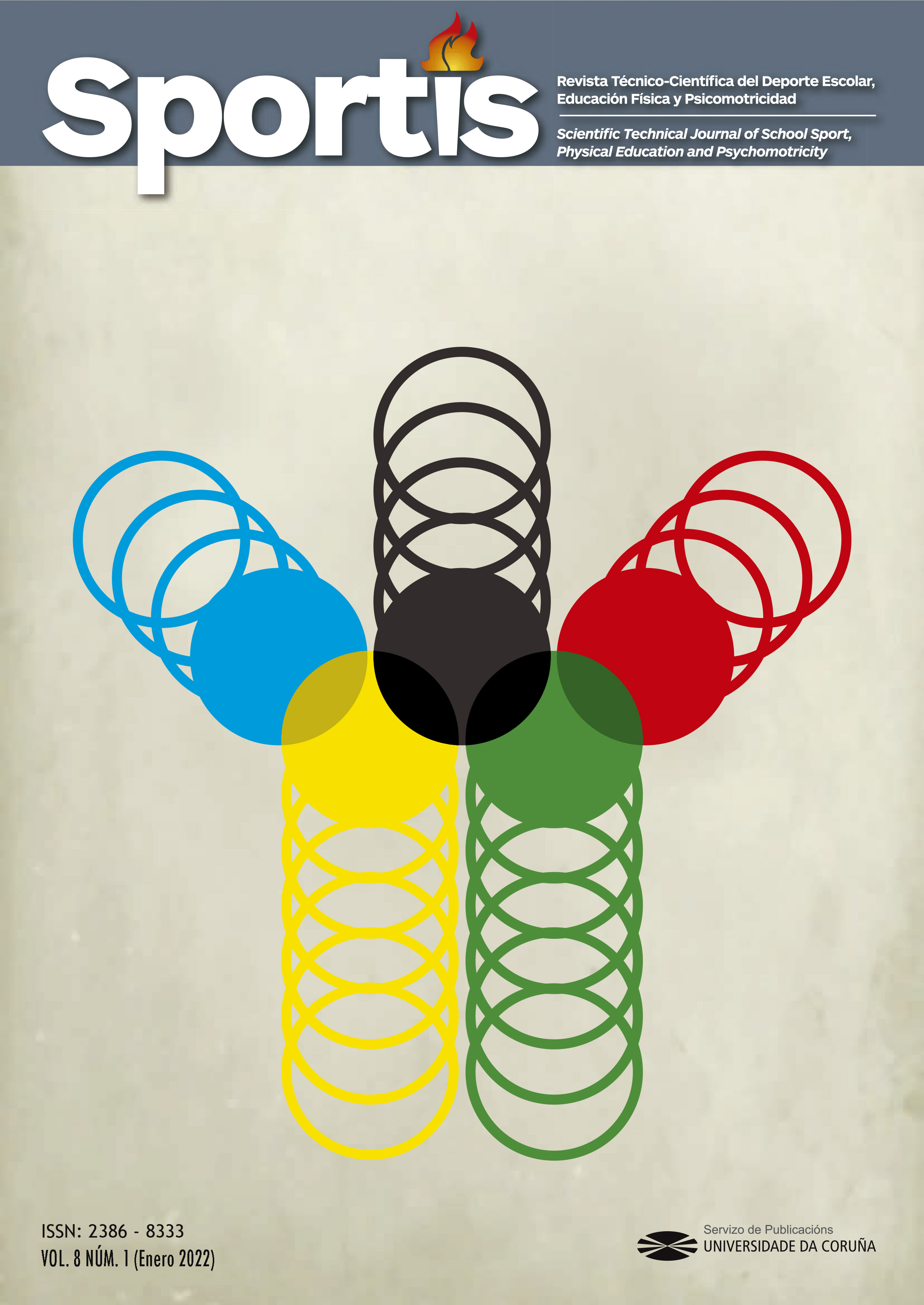Social network analysis: a case study in Physical Education
Main Article Content
Abstract
This study analyzes social networks in a physical education class in a public high school in Valencia during the COVID-19 pandemic. The main objective of this paper is to check the social status of the classroom and identify potentially problematic situations in the classroom, based on the analysis of dimensions such as pleasant interaction, emotional support, social support and co-study. To do this, a quantitative methodology was used through a questionnaire where students had to respond based on their perception of the rest of their classmates from various items corresponding to sociological dimensions. From this point, a social network analysis (SNA) was carried out and numerical and graphic values were extracted that exposed the social situation of the students. Integration problems were found, derived from the great differences in centrality between the most isolated students and the average of the class, as well as a large number of connections in the dimension “pleasant interaction”, and few connections in “emotional support”. Substantial leadership differences were also found depending on the dimension, so that the student leaders in some areas were not leaders in others. Finally, differences were found between face-to-face and digital connections, the latter being greater. This study encourages physical education teachers to use SNA to objectively know the social situation of the class, taking into account the great social component that surrounds a session of this subject.
Keywords:
Downloads
Article Details
References
Carlsson, M., Dahl, G. B., Öckert, B., y Rooth, D. O. (2015). The effect of schooling on cognitive skills. Review of Economics and Statistics, 97(3), 533–547. https://doi.org/10.1162/REST_a_00501
Cava, M. J., y Musitu, G. (2000). Perfil de los niños con problemas de integración social en el aula. Revista de Psicologia Social, 15(3), 319–333. https://doi.org/10.1174/021347400760259730
Cifuentes, J. (2020). Consecuencias en los Niños del Cierre de Escuelas por Covid-19: El Papel del Gobierno, Profesores y Padres. Revista Internacional de Educación Para La Justicia Social, 9(3), 1–12.
Domínguez López, F., Del, M., y Chávez, C. M. (2011). Las manifestaciones del bullying en adolescentes. Uaricha Revista de Psicología, 8(17), 19–33.
Elmer, T., Mepham, K., y Stadtfeld, C. (2020). Students under lockdown: Comparisons of students’ social networks and mental health before and during the COVID-19 crisis in Switzerland. PLoS ONE, 15. https://doi.org/10.1371/journal.pone.0236337
García Bacete, F.-J. (2007). La identificación de alumnos rechazados, preferidos, ignorados y controvertidos en el aula. Revista de Psicología General y Aplicada: Revista de La Federación Española de Asociaciones de Psicología, 60(1), 25–46. Recuperado a partir de http://repositori.uji.es/xmlui/handle/10234/159585
Lazega, E., Wasserman, S., y Faust, K. (1995). Social Network Analysis: Methods and Applications. Revue Française de Sociologie, 36(4), 781. https://doi.org/10.2307/3322457
Marín-Suelves, D., y Ramon-Llin Más, J. (2021). Physical education and inclusion: A bibliometric study. Apunts. Educacion Fisica y Deportes, 143, 17–26. https://doi.org/10.5672/APUNTS.2014-0983.ES.(2021/1).143.03
Murcia, J. A. M., Rojas, N. P., y Coll, D. G. C. (2008). Influencia del apoyo a la autonomía, las metas sociales y la relación con los demás sobre la desmotivación en educación física. Psicothema, 20(4), 636–641. Recuperado a partir de https://reunido.uniovi.es/index.php/PST/article/view/8709
Schiefer, D., y van der Noll, J. (2017). The Essentials of Social Cohesion: A Literature Review. Social Indicators Research, 132(2), 579–603. https://doi.org/10.1007/s11205-016-1314-5
Scott, J., & Carrington, P. (2015). The SAGE Handbook of Social Network Analysis. In The SAGE Handbook of Social Network Analysis. https://doi.org/10.4135/9781446294413
Simons, H. (2011). El estudio de caso: Teoría y práctica.
Torralbas Oslé, J. E., Batista Sardain, P., y Naranjo Pou, S. de la C. (2020). Perfiles Sociométricos de Adolescentes en Grupos Escolares de Enseñanza Media y Media-Superior de la Habana. Revista Caribeña de Psicología, 4(1), 70–80. https://doi.org/10.37226/rcp.v4i1.2121
Warner, S., Bowers, M. T., y Dixon, M. A. (2012). Team dynamics: A social network perspective. Journal of Sport Management, 26(1), 53–66. https://doi.org/10.1123/jsm.26.1.53
Wegge, D., Vandebosch, H., y Eggermont, S. (2014). Who bullies whom online: A social network analysis of cyberbullying in a school context. Communications, 39(4), 415–433. https://doi.org/10.1515/commun-2014-0019







